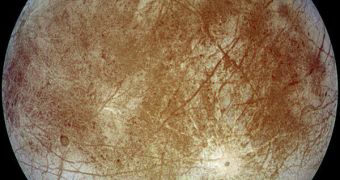According to the latest decadal report released by the National Research Council (NRC), the Red Planet and the Jovian moon Europa should be the highest priorities on the NASA agenda for the next 10 years. Expeditions there should be conducted as soon as possible.
While a lot of ink has been spilled explaining why Mars is so important for our understanding of the solar system and the origins of life, Europa has remained largely in the shadows, despite its traits.
The reasons why experts consider it to be so special is that it may contain an underground ocean of liquid water beneath the thick crust of ice covering its surface. The same thing may also be true on the Saturnine moon Enceladus.
NRC investigators arrived at the conclusions they highlighted in the much-anticipated report after an in-depth analysis of the costs and potential returns for a large number and type of space missions.
Their paper, called “Vision and Voyages for Planetary Science in the Decade 2013-2022,” also takes into account the fact that NASA is getting less money every year, and that budget restraints are really starting to become a problem.
According to the NRC group, the highest-priority planetary science mission that NASA should conduct is the Mars Astrobiology Explorer Cacher (MAX-C). This spacecraft could single-handedly settle the debate as to whether the Red Planet ever hosted life or not, Space reports.
“We've achieved a great deal when it comes to advancing our knowledge of Mars in the past 15 or 20 years, but our understanding has reached the point now where the big advances in the future come from actually getting samples back to Earth,” explains Steven Squyres.
He is a planetary scientist at the Cornell University, in Ithaca, New York, the principal science investigator of the twin Martian rovers Spirit and Opportunity, and the chairman of the committee that wrote the NRC report.
“There are severe limitations to what can be achieved with the miniaturized instruments we send to Mars – they'll always be much less capable than the best instruments and labs back on Earth, so really fundamental questions, particularly whether Mars was habitable in its history and whether life took hold there, really requires samples taken back to Earth,” he adds.
The second priority, the report proposes, should be the Jupiter Europa Orbiter (JEO). “There are very good reasons to believe Europa has an ocean, which is probably under a relatively thin layer of ice,” Squyres explains.
Such a mission has however been valued at around $4.7 billion, which would literally take a huge chunk out of the $18.7 budget NASA gets every year. If the JEO were built, too many other important missions would have to be abandoned.
The third priority for NASA should be to build the Uranus Orbiter and Probe (UOP). There have been no missions destined specifically for this ice giant ever before, and this is felt in the few data we have of the celestial body.
“There is much to learn about these ice giants – this is exploration in its truest sense,” Squyres says. The mission has been independently estimated to cost around $2.7 billion./
“Our recommendations are science-driven, and they offer a balanced mix of missions – large, medium and small – that have the potential to greatly expand our knowledge of the solar system,” he adds.
“However, in these tough economic times, some difficult choices may have to be made. With that in mind, our priority missions were carefully selected based on their potential to yield the most scientific benefit per dollar spent,” he concludes.

 14 DAY TRIAL //
14 DAY TRIAL //